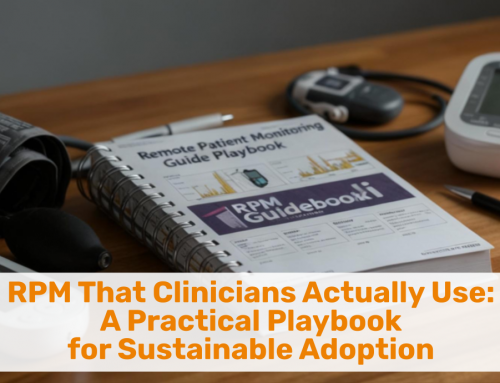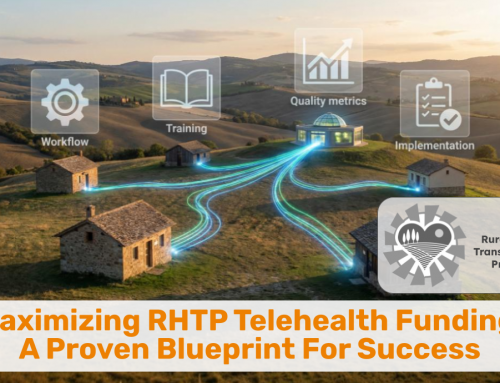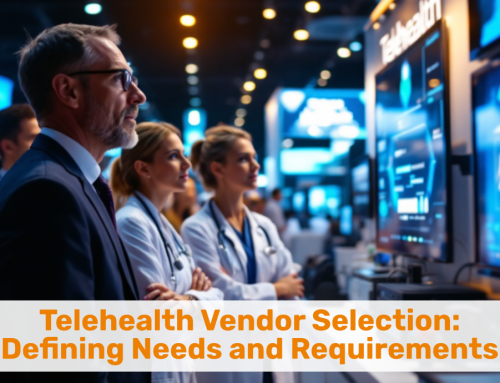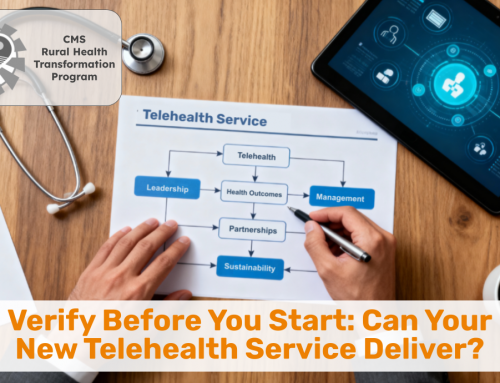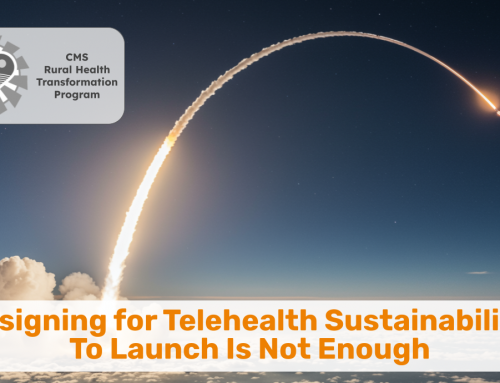The ultimate nirvana of human physical wellbeing would be the absence of disease and injury. But even in a world where all diseases are successfully prevented, someone (or something), presumably, still needs to administer those prophylactic treatments.
For the foreseeable future humankind will therefore continue to have to count on the delivery of care, whether preventive or curative,
But what could that future look like in 10, 15, 25 years?
As we move into the second quarter of the 21st century — in the wake of an accelerating explosion of generative AI powered by large language models and by an exponential increase in computing power paired with a decrease in cost — what do the next 25 years hold?
In this series of sketching a picture of the future of care delivery, I will focus on three areas of healthcare, starting with the first one in this article.
1. Telehealth — Delivering Care at a Distance
2. Acute & Inpatient Care — Hands-On Care with a Physical Touch
3. AI-Powered Care Delivery — Intelligent Assistants providing Actional Insights
Telehealth: The Future of Delivering Care at a Distance
Since the Covid-19 health crisis, Telehealth has evolved from an esoteric niche service used by a few to a broadly accepted, fundamental service of modern healthcare. Telehealth’s ability to provide care across distances has been particularly beneficial in enhancing access for patients in rural or underserved areas.
Over the past years telehealth evolved from video visits to include a whole set of care delivery modalities. Here is my vision for the future state of the four current and emerging modalities of Telehealth: Store & Forward, Video Visits, and RPM.
Store & Forward
While the grandfather of telehealth is the video visit (reportedly in the late 1960s provided to patients in the Boston Logan Airport), the grandmother of telehealth is the transmission of an EKG over phone lines.
Without a doubt, Store and Forward Telehealth has been around for a long time!
The standardization for storing, transmitting, and viewing medical images through the DICOM standard in the early 1990s paved the way for TeleRadiology in the mid 1990s to flourish as the first widely adopted use of “telehealth”.
What was a mindset shifting (and technologically challenging) innovation back then, is now commonplace — i.e., the electronic transmission and sharing of all kinds of clinical data, not just images.
So what does the future of Store & Forward look like?
One possible evolution related to this particular telehealth domain is the comprehensive and ubiquitous portability of medical information. HL7 FHIR is the current next level, but it is focused on the old paradigm of exchanging discrete data fields.
Powered by the ongoing AI revolution, increase in computing and networking speed, the future does actually not lie in the portability of medical information, but rather in universal access to medical information. The old paradigm of portability dictates that a copy of the data be stored “locally”. But the future could be that the clinical data stays with the originator and is made easily accessible in real time through a natural language query interface that can provide any combination of information in near-real time.
Video Visits
From the late 1960s (see above) to the slow start enabled by the availability of (expensive) low-fidelity video feeds (mostly accessible only to academic medical centers), video visits definitely got their adoption boost during the Covid-19 health crisis. By then, corporate video conferencing (pioneered by Polycom and WebEx) and personal video conferencing (pioneered by Facetime and Google Meet) had “proven the concept” of video connections, and video visit use in March through June 2020 skyrocketed to unprecedented levels.
While “video phones” were a technical possibility, nobody in the 1990s could envision picking up a video phone on a bad hair day or stepping out of the shower; by now video call requests are rarely thought about twice, though they are still not the norm between strangers or acquaintances.
Therefore, the adoption of video visits is largely dependent on our human attitude towards this technology, and less constrained by the technical limitations.
The Future of Video Visits
As the use of video to communicate, as projected in virtually every science fiction movie, becomes more normalized and ubiquitous, cameras and viewing screens could become embedded in all areas of our homes — a screen in the fridge, above the stove, in the bathroom mirror. I can easily envision a future where numerous tracking cameras are following me through the house as I carry on a conversation with a friend, with their video following me into every room or space (as configured by my privacy settings).
If TVs continue to become focal points of our home lives, I can envision an integration of clinical video calls into the TV set (as has been tried, thus far without widespread success, for as long as I’ve been in telehealth).
As AI becomes increasingly more powerful to create or augment visual or audible diagnoses of moods, high blood pressure, or even sleep apnea, the next second or third future generation of video visits will fully incorporate more real-time physiological data.
I’d even be comfortable for a small hummingbird sized drone (that launched from behind my TV screen) to conduct a brief fly exam. Or, depending on your comfort level, to perform a quick visual physical exam in the morning in the bathroom.
In short, as our level of comfort with video increases, and as technology’s capabilities to aid in the diagnosis increase, video visits will become the new norm of a “doctor visit”.



RPM: Remote Physiological Monitoring
RPM, the ability to periodically collect, transmit, and analyze physiological parameters “at a distance” has also been around for many decades. 25-30 years ago patients would be asked to take those measurements and call them in; some early fancy versions had wired data collection devices that would transmit the data over phone lines, by periodically calling a number to upload the latest measurements.
Given the prevalence of chronic diseases and the need to activate patients to participate in their care, RPM offers a plethora of opportunities to provide patients with near real time feedback on their lifestyle choices — skipped your exercise this week? ate some high sodium food? not enough sleep this week? The results will show the effects of that behavior and provide just-in-time opportunities for opportunities – and behavior change.
The Future of RPM
One aspect we will surely see more of are highly unobtrusive (if ever so slightly personally invasive) monitoring devicesthat can assist clinicians in making better diagnoses or improving the evaluation of the efficacy of the care plan.
Many of these technologies are already here (e.g., toilet sensors, movement trackers) and just like ambient listening is becoming increasingly acceptable in the counselors or clinician office, it may also become increasingly acceptable (Alexa/Siri, are you listening?) to enable such listening (just like location tracking) for medical purposes.
But similar to the acceptance of video visits, ambient listening or constant “surveillance” may not be acceptable until future generations that grow up with such technologies.
Another trend in RPM is the development of novel sensors beyond the traditional weight, blood pressure, blood glucose, and oxygen saturation. I’m currently working with two startups that are focused on “sensors” in subspecialties, such as maternal health (for reliable at-home non-stress testing) or sleep medicine (for non-intrusive, diagnostic sleep studies or sleep quality monitoring).
Finally, the application of AI on large datasets of RPM across millions of patients, coupled with the patients medical record data can lead to the holy grail of RPM: the early detection of the onset of disease based on a multitude of variables. The deterioration of human health can oftentimes be imperceptible to the human eye (or mind), but could at least be flagged by an AI for review.
The Future is already here…
…it is just not evenly distributed.
Many of the examples above are already possible with currently available technologies. The future of care delivery via telehealth is thus less dependent on technical innovation but more hostage to most people’s technophobias and (rightful) privacy concerns.
But we know from experience that when the benefits (a longer life at a higher quality of life) outweigh the costs, people eventually will adopt new technologies, especially once the “early majority” has tested them thoroughly.
What is your vision for the future of Healthcare Delivery? Share it in the comments or drop me a note.








To receive articles like these in your Inbox every week, you can subscribe to Christian’s Telehealth Tuesday Newsletter.
Christian Milaster and his team optimize Telehealth Services for health systems and physician practices. Christian is the Founder and President of Ingenium Digital Health Advisors where he and his expert consortium partner with healthcare leaders to enable the delivery of extraordinary care.
Contact Christian by phone or text at 657-464-3648, via email, or video chat.


